“In each one of us, there is a place of perfect silence. This silence is not dead. It vibrates. It has a pulse. It is the force of this silence that drives a seeker to go within.†Swami Chidvilasananda
For the past two years, L Gnadinger has been quietly making art in the wooded hills of North Carolina on a fellowship at the Penland School of Craft, an open and progressive institute nestled within the Blue Ridge Mountains that offers the conditions for what the artist calls “a good, old fashioned spiritual retreat.†The explorations of this withdrawal to the woods are reflected in Gnadinger’s current solo show at Quappi Projects titled “Notably Untested Spiritual Gestures,†an ecumenical collection of textiles, ceramics, and works on paper that present their vision of a queer futurism as filtered through the visual vernacular of their Roman Catholic upbringing.
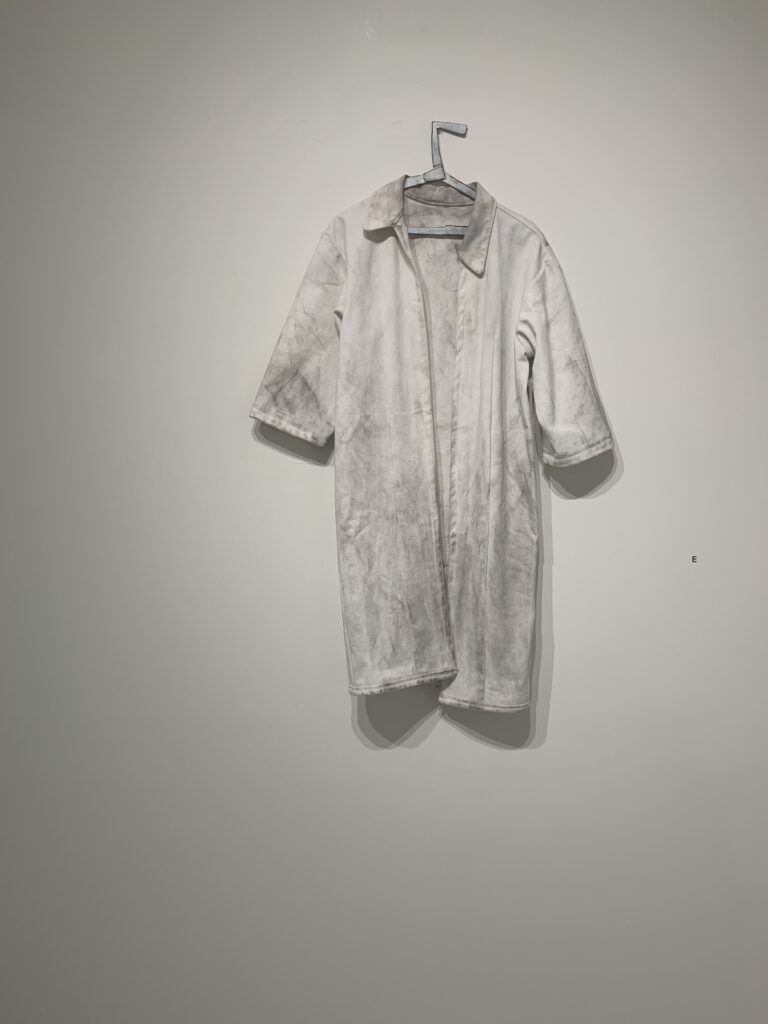
Call them gestures, call them studies, or – as Gnadinger prefers – “spiritual experiments.†A handsewn white denim lab coat, Vestment, hangs at the back of the gallery and serves as a visual and thematic focal point, setting up the interplay of science and religion that permeates the show. Tailored to the artist’s proportions, the garment has a slightly unsettling liminal quality suggestive of some unseen presence: a ghost from ages past, perhaps, or its opposite – some future being that has created these objects ahead of our present time.
Gnadinger, who self-identifies as nonbinary, thinks of this figure as quasi-autobiographical, one who cobbles together fabric and paint and clay and steel in an attempt to create something that feels sacred: “It’s not religious art in the sense that it’s celebrating something that exists,†the artist says. “It’s more about making art in the hope that I might create something to celebrate – an inward spiritual self that is viable and feels real and honest.â€
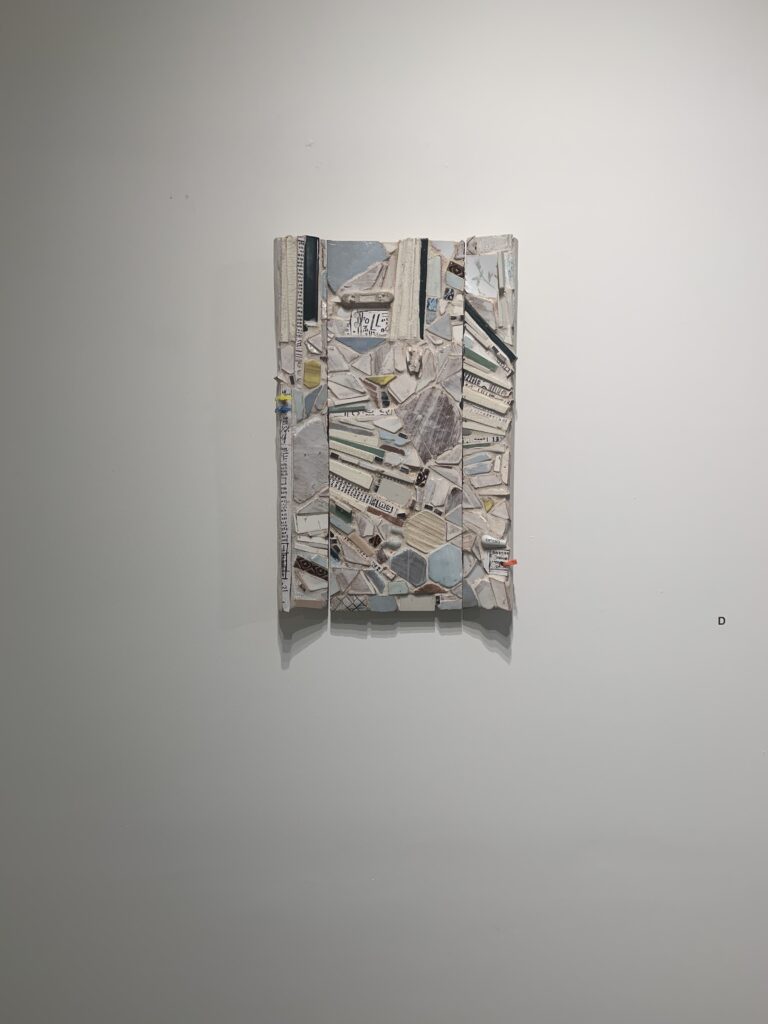
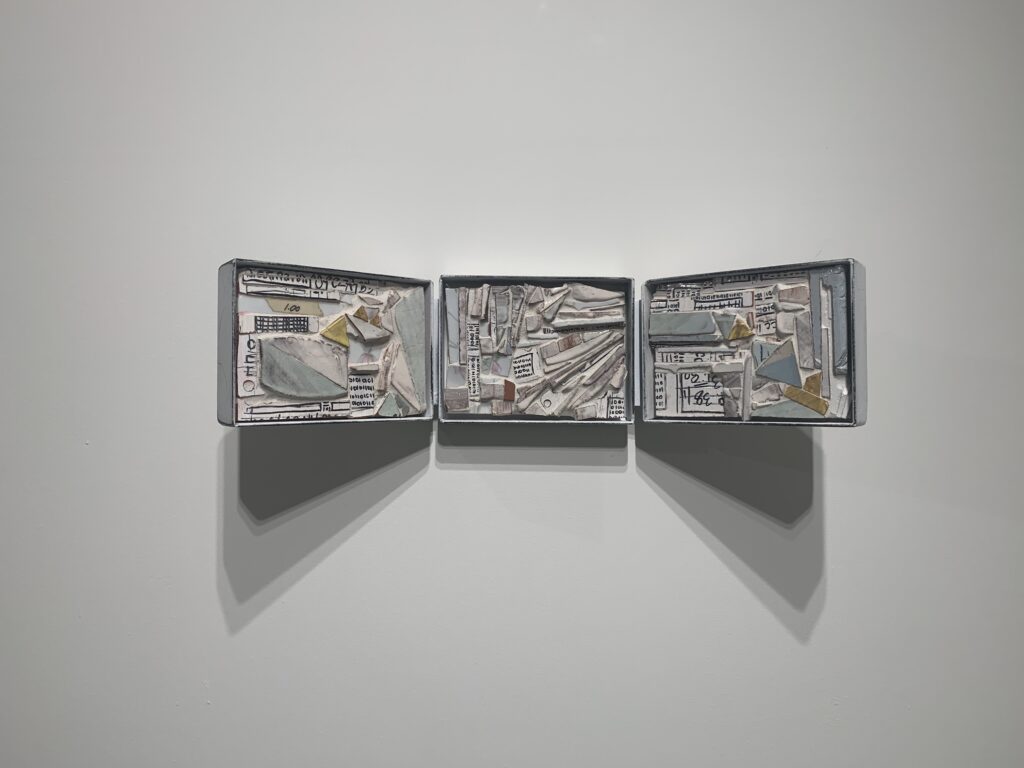
Far from rebelling against the visual tropes of Christianity, Gnadinger’s work embraces them, taking classical religious forms and remaking them in the materials of their world (not Rome’s). Two triptychs, the vertical Devotional: The Cold Knob and horizontal A Sort of Prayer, are filled with fragments of found ceramics (faucet knobs, broken tea plates, electric outlet covers, orphaned floor tiles) and the artist’s own handmade tiles adorned with painted binary code, all in close and harmonious arrangement.Â
“The marriage of ideas and materials is so beautifully executed,†remarks John Brooks, owner and curator of Quappi Projects. “If you count all of the individual colors in the works, the list is quite long, yet the whole show seems to vibrate in this very narrow band, as if everything is behind gauze or is slightly rubbed out.â€
Like the rest of the pieces in the show, the triptychs don’t often stray from a quiet January palette of creamy whites and pale blues, salmon and apricot and copper and dirt – a far cry indeed from the red and gold and silver and brass that invest the traditional Catholic mass with so much of its visual power. Gnadinger’s religion is made from humbler stuff: the colors of the Blue Ridge Mountains in an early morning fog, the rock and clay they offer for our creative use.
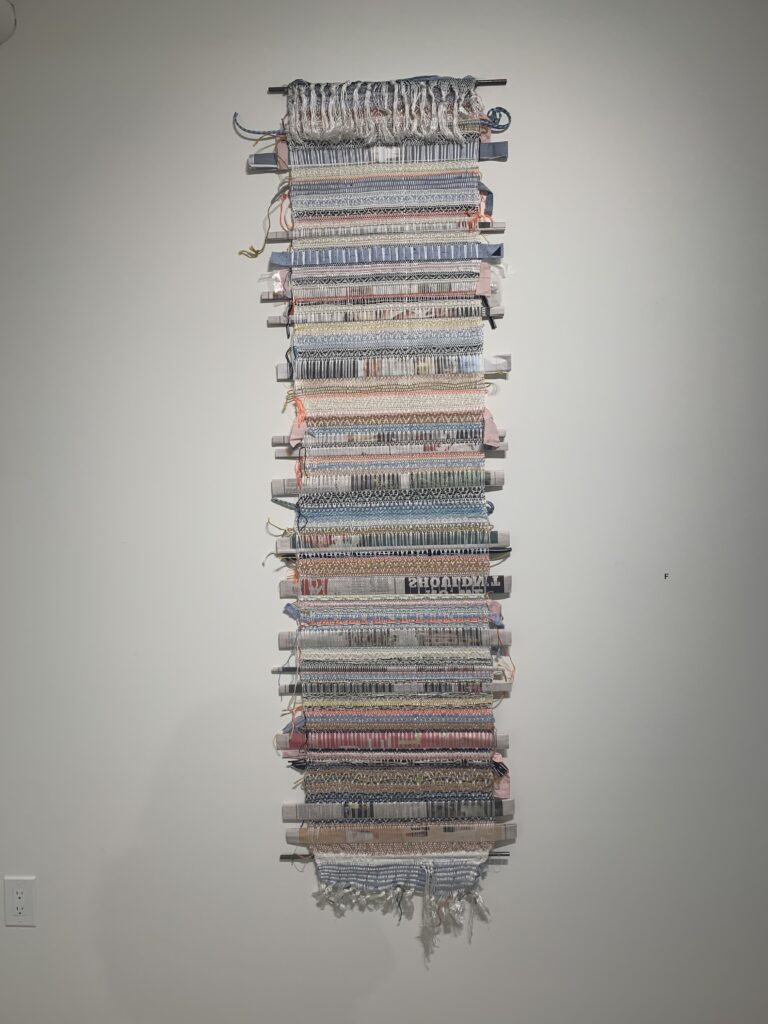
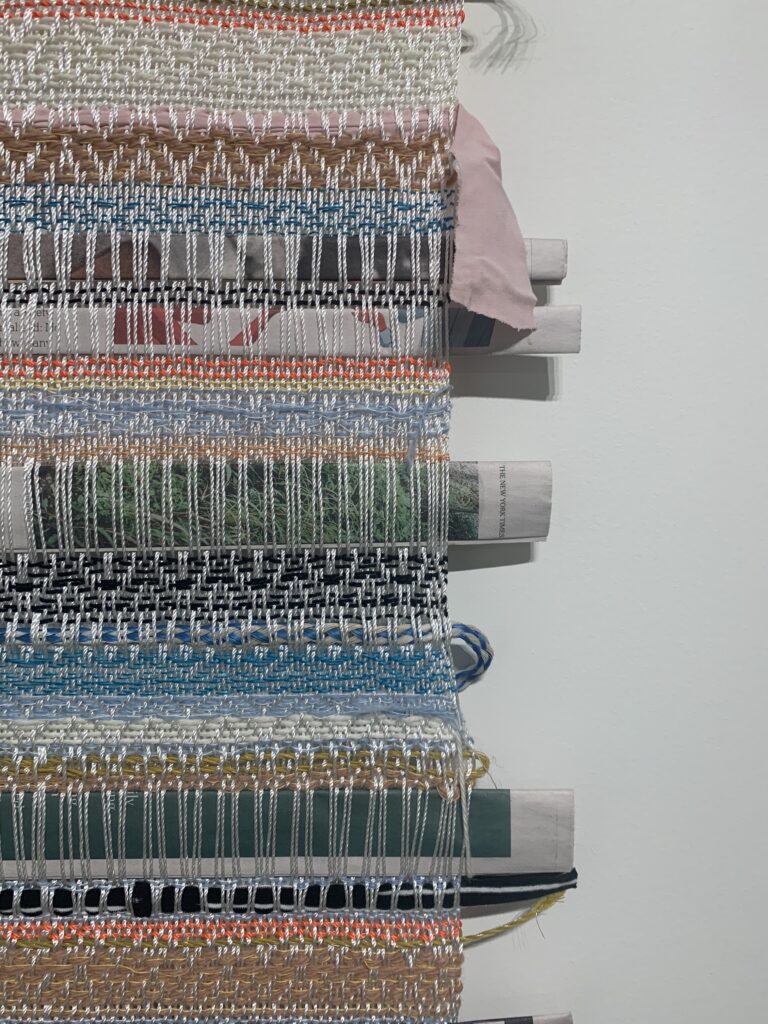
In a hanging textile work, Banner, Ordinary Time, Gnadinger interweaves scraps of everyday garments, newspapers, and plastic with delicate strands of shimmering threads, again bringing together the mundane and the ethereal in pleasurable conversation. Even the title suggests a more accessible spirituality, one oriented to domestic ritual, rooted in our daily routines and grounded in our quotidian hopes and concerns, our small but personal lives.
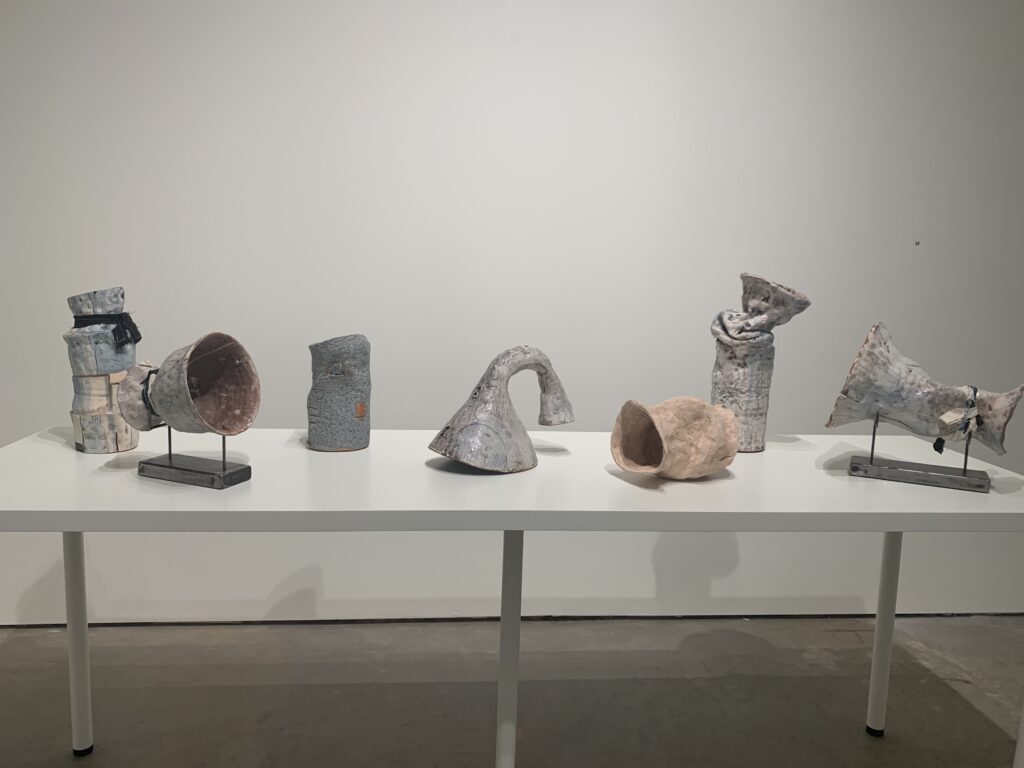
It is an idea that is given eloquent articulation in a collection of ceramics gathered on a white table like a band of misfit toys, roughhewn and misshapen but reverently – adoringly, even – marked and painted and glazed, as if to illustrate Simone Weil’s assertion that “absolutely unmixed attention is prayer.†The pieces take the vague shapes of bells and horns, chalice and ciborium, vessels for communal celebration rendered in lowly materials by humble hands. What more primal matter than clay, the very stuff that pre-Christian gods employed for their human creations?

Gnadinger can call forth celestial realms as well, most notably in their works on paper. A trinity named Untitled offers the show’s rare concentrated use of the color black: over layers of collaged paper painted in a creamy shade of acrylic, they rub large swathes of charcoal to bring forth the shapes and textures of moon craters, nascent galaxies and futurist geometries. In the search for something larger than ourselves, we travel beyond the limits of heaven and into the infinite vastness of the universe, to this primordial mingling of cosmic dust, these eternal materials that are then imbued with ephemeral meaning through the artist’s hands.
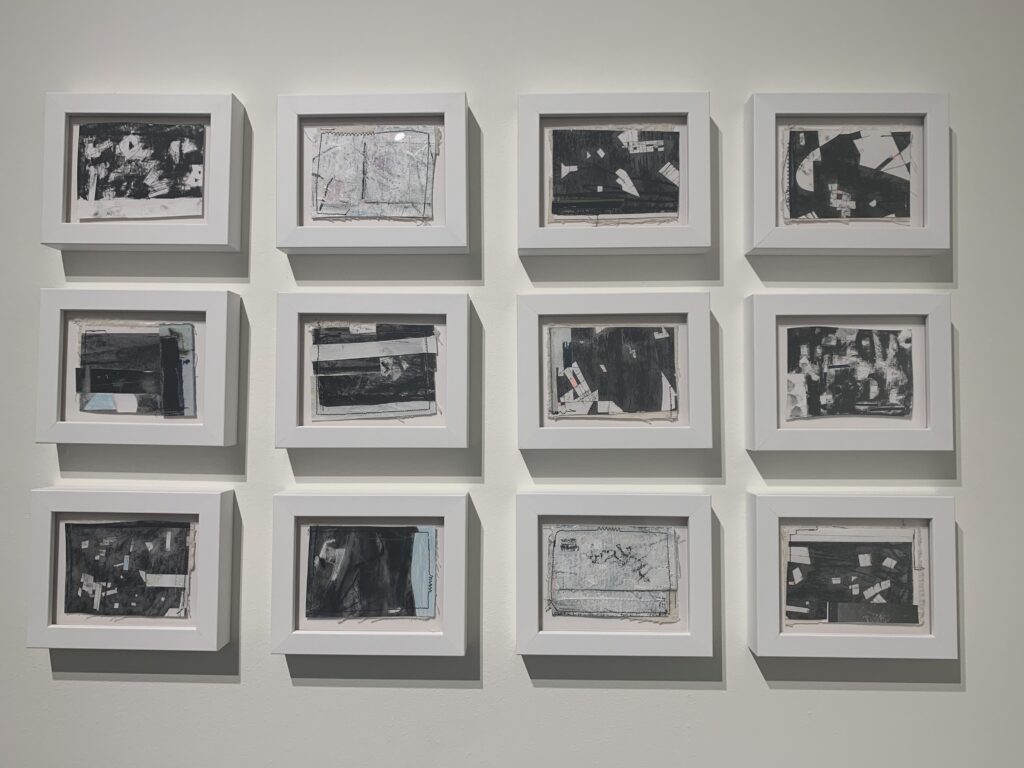
Look closer at the works on paper – Presently Undetectable Things Or Maybe Tiny Ghosts #5, #6, #7 – and see the linen threads mechanically stitched within the works; suddenly one can imagine our creature in the lab coat as an interstellar seamstress in her celestial atelier, carefully attending to the creation of a new world. (Let the series of miniatures, numbered #7-18, stand as the thumbnail sketches she created in birthing this grand design.) In Gnadinger’s spirituality, space is not a cosmic void but a pregnant silence quietly vibrating with possibility. The dead are not tiny ghosts, but instead very real things that are simply presently undetectable through our earthly ways of seeing.
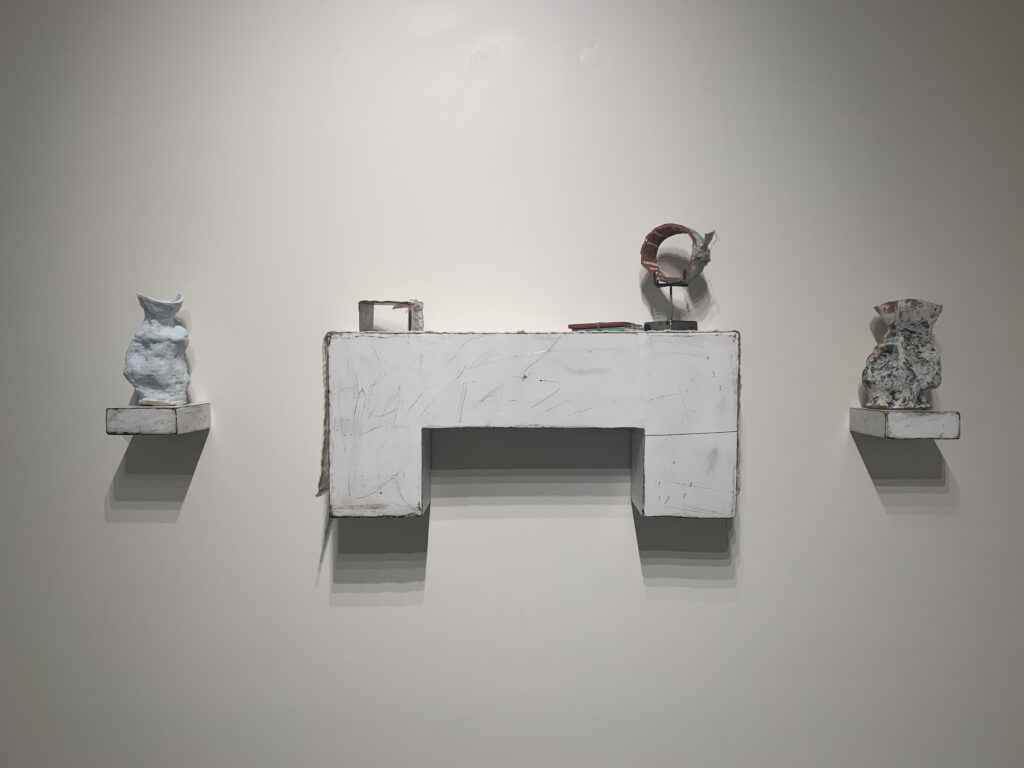
Perhaps that helps explain the titular objects in Altar With Telescope, a modestly proportioned work featuring a fabricated steel altar prepared for worship with ceremonial linens, a parcel of thin paper books and a mounted telescope made from a short cuff of ceramic wrapped with handwoven cloth. The inclusion of a telescope on the altar would seem to suggest that spiritual answers may be found in the stars, or that there is some merit in skyward searching, at least.Â
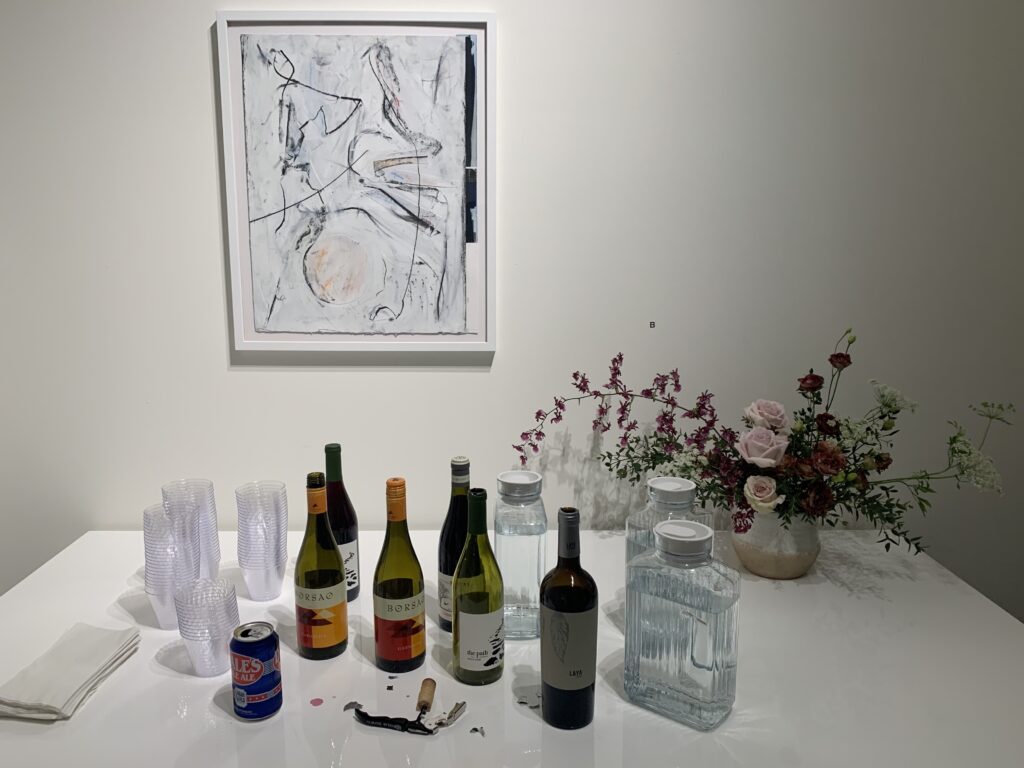
And yet Gnadinger’s rudimentary telescope contains no apparatus for magnification, not even the crude focus offered by a long, narrow tube: it is simply a circular frame through which to gaze. But what if that is the point? What if this collection of spiritual experiments reveals that, in fact, there’s nothing to reveal: the divine has been in plain sight all along, in the everyday vessels of our commonplace rituals, in the materials of our kitchens and baths, even here in this gallery where wine is poured and strangers gather in celebration of the communal grace of art.Â




